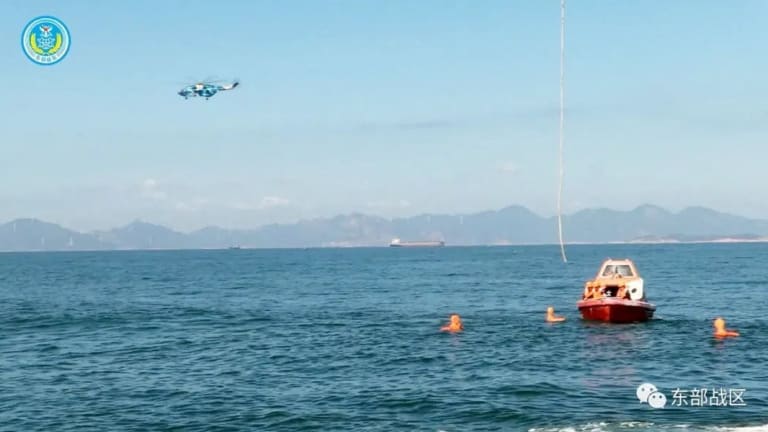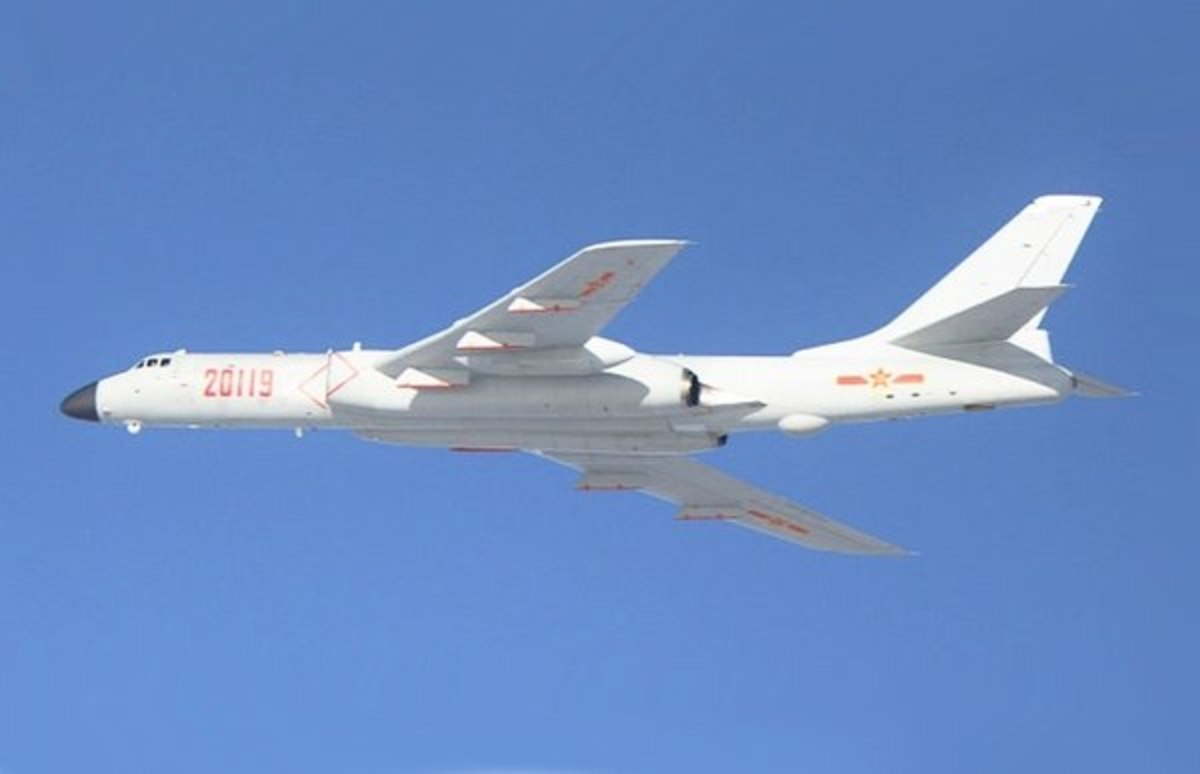KRIS OSBORN

Using the term “island attack drills,” a Chinese-government backed newspaper says the People’s Liberation Army is flying bombers, fighters and surveillance planes in preparation for a possible so-called “joint land attack and long-range air strike” invasion of Taiwan.
However, while the phrasing and language of joint warfare operations may sound ominous, it raises an interesting question regarding the actual extent to which Chinese military forces are actually capable of “joint” multi-service operations.
Such an ability, now evolving quickly within the US military services, is technologically complex and dependent upon an ability to align data and messaging formats, connect separately engineered communications nodes across multiple domains and vast distances and process shared information at relevant speeds.

A helicopter and boat under the Eastern Theatre Command of China's People's Liberation Army (PLA) take part in a maritime rescue drill, as part of military exercises in the waters around Taiwan, at an undisclosed location August 9, 2022 in this handout image released on August 10, 2022.
The extent to which China can do this might well indicate just how well the US military would perform in a major warfare engagement. Should the US be well ahead of China in this capacity, such a technological imbalance would favor success for the US.
Citing a video released by PLA Eastern Theater Command, the Global Times said the war drills included an H-6K bomber, JH-7A fighter bomber and the Su-30.
“Fully loaded with live ammunition, several bombers and fighter bombers of the Air Force took off one by one, entered combat formations, and launched standoff, saturation strike exercises with various types of precision munitions,” the paper says‘
The Chinese paper seemed to suggest that the PLA was also mirroring or potentially even copying a US military tactical focus on multi-domain operations, reporting that the air assets were accompanied by the PLA Army’s “long-range rocket artillery and the Rocket Force’s conventional missiles.”
While this may sound significant, the extent to which the PLA is capable of multi-domain attack would seem to rely on an ability to “network” information in near real time and connect target data specifics between bomber aircraft and ground-based missile launchers. This is something the US Is making rapid progress with though its air-land-sea multi-domain task forces in the Pacific and joint-service program called Joint All Domain Command and Control (JADC2).

H-6K
With China, a potentially lesser known yet critical element of the PLA’s multi-domain connectivity would depend upon how much they have evolved in areas of multi-transport layer interoperability, cross-domain networking and common protocol to allow otherwise disparate information systems to security exchange information.
While the Chinese report did not include specific kinds of communications technologies, it did suggest that the bombers and fighters were connected wtih early warning surveillance planes and EW-capable planes and warships at sea. Should this be true, meaning should the PLA be capable of sending time-critical data from bombers to surveillance planes to surface warships to land weapons systems, it would suggest a concerning and potentially formidable threat.
However, while so much may be unknown regarding the PLA’s capacities, the US is now well-evolved with this kind of connectivity and has, for instance, demonstrated many multi-domain, joint-force networking successes. For instance, the Army’s fast-evolving Integrated Battle Command System (IBCS) ground-based networking radar and missile defense systems has demonstrated an ability to share information with Air Force F-35s. Northrop, Navy and Army developers of ICBS are also exploring the prospect of extending the network to incorporate the Navy’s surface-ship Aegis combat system.
No comments:
Post a Comment